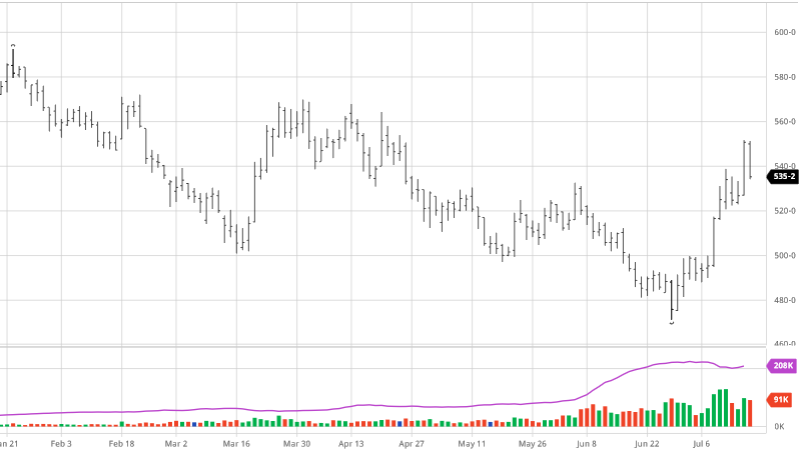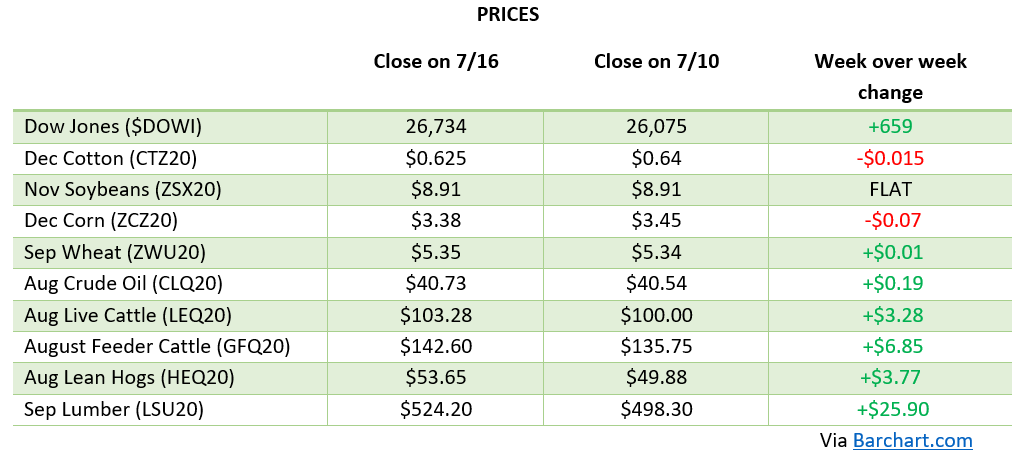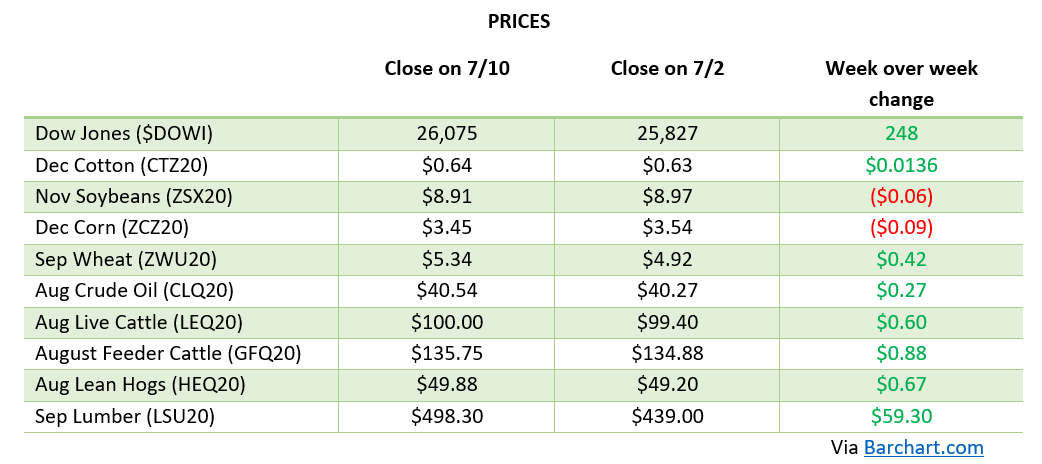
Corn gained on the week following soybeans lead. Corn exports, like soybeans, have been strong with China being a large buyer recently. As some analysts have pointed out, this pace of Chinese purchases may be a signal that their supplies are much lower than they have reported. As most numbers that come out of China, one should be skeptical, so this may be showing us where they actually stand. With weather looking good heading into harvest, the next few weeks should allow for steady progress. As you can see from the chart below, prices are at the highest they have been since March heading into harvest following the upward trend in beans; you may want to begin looking at putting a floor in. If corn exports continue (136% ahead of where they were this time last year), we may still see an upward trend, but keep an eye on demand as harvest begins.
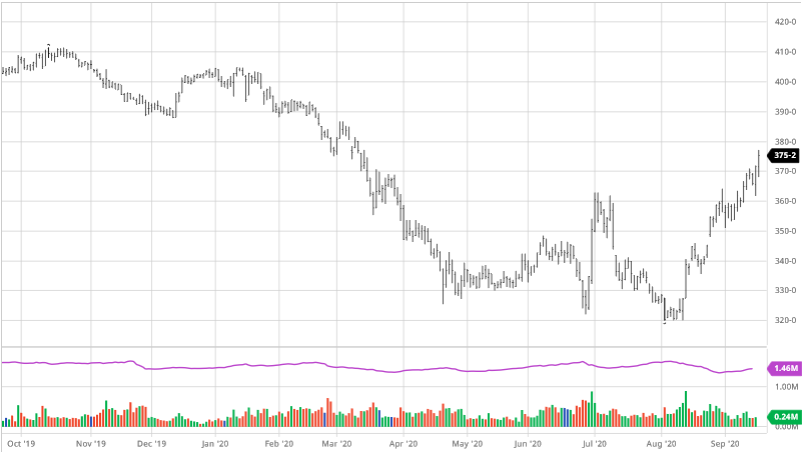

Soybeans saw huge gains this week to get and stay over $10.00 for the first time in the last 2 years. The continued buying from China, 6+ MBU seemingly every day, has led this charge up as we continue to see large export numbers. Funds have also been buyers along the run and are nearing 1 BBU in net long positions, the largest long position since 2012 when we had a devastating drought. If China keeps up with the purchases it is definitely supportive for prices. Soybean exports are 189% ahead of where they were this time last year. If soybean sales keep up this pace there does not seem much to get in the way of prices as South America is running low on last year’s crop as they begin planting for this year. The chart below shows the recent surge reaching contract highs as we head into harvest.
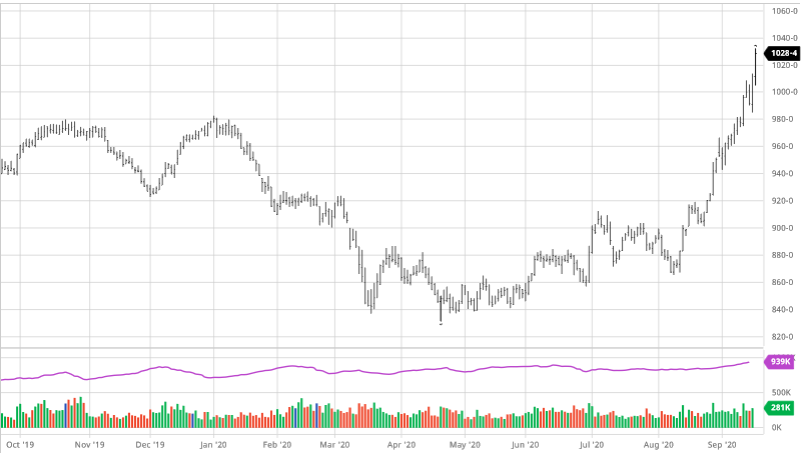

Dow Jones
The Dow gained on the week after several up and down trading days as tech stocks continue to struggle after the large selloff last week. It seems to have weathered the storm and may continue its slow recovery as many major areas of the US stay in some form of lockdown.
World Weather
Dry and warm weather remains heading forward as harvest beings in the US. South America is unusually dry as planting season starts and Russian wheat areas need rain. A large spread soaking rain in SA may dip prices a bit, but if SA drought continues after planting that would be bullish for beans.
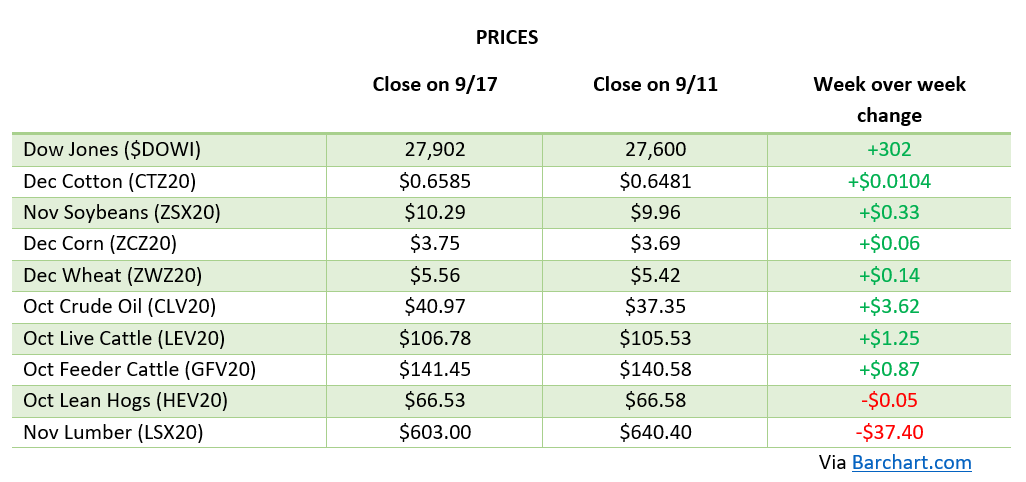



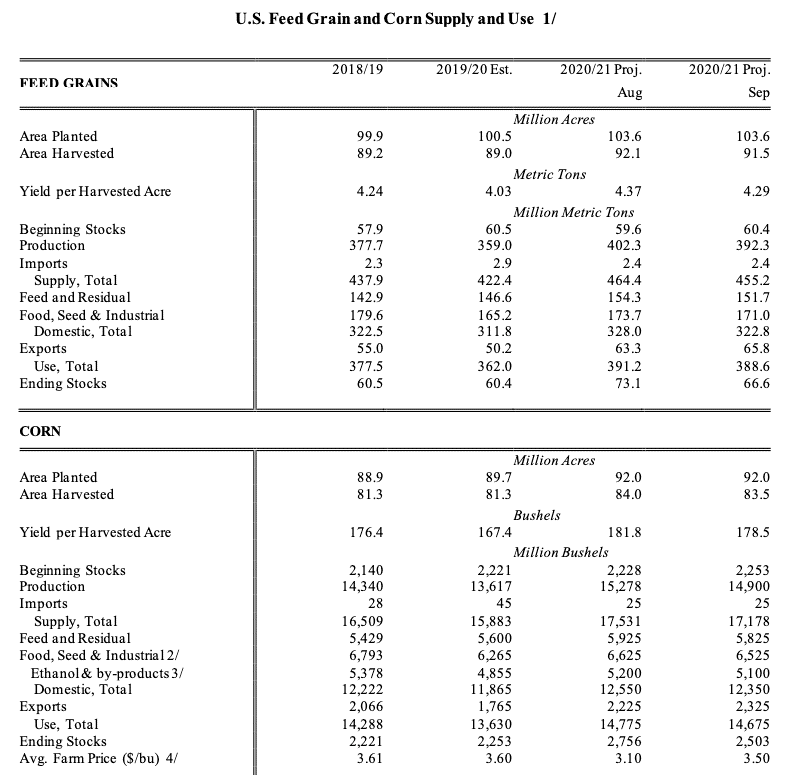
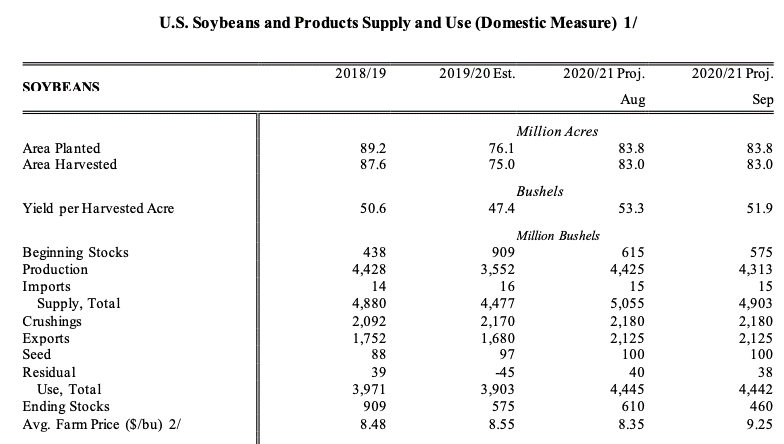
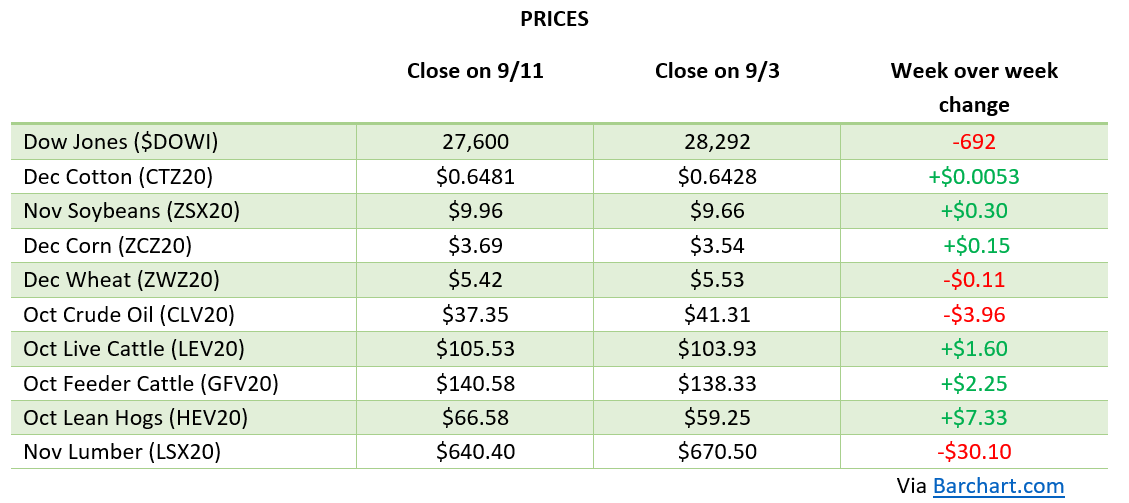
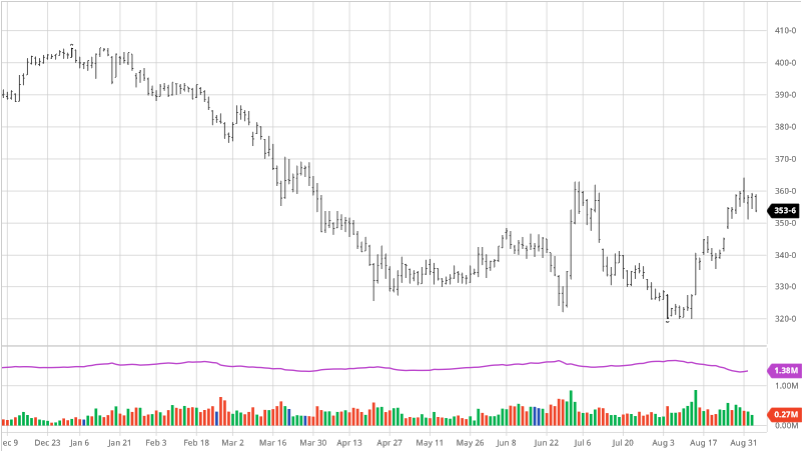
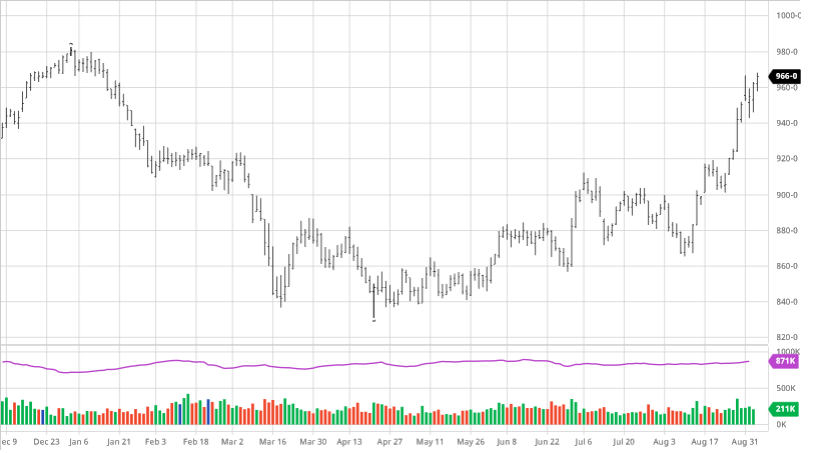
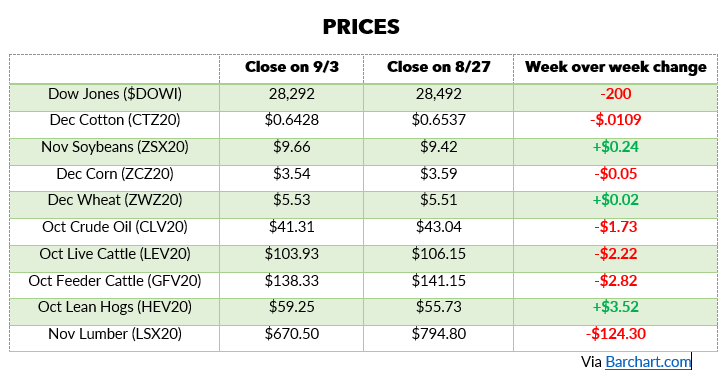

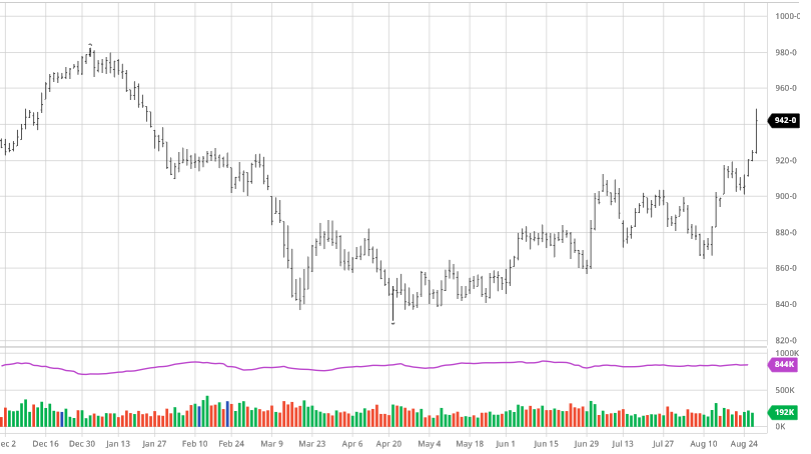



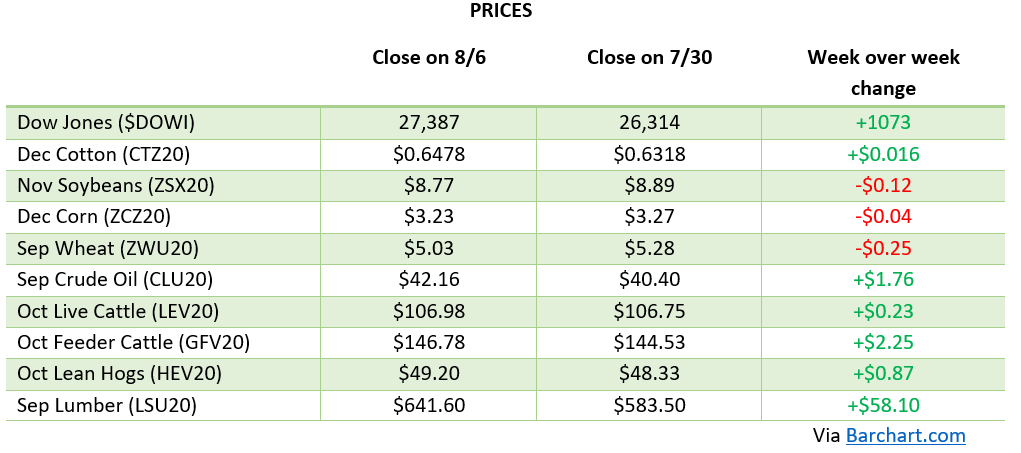
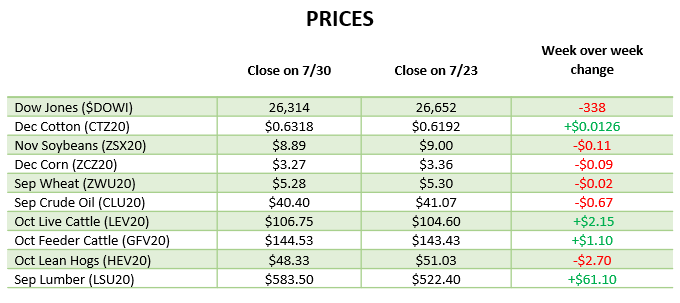
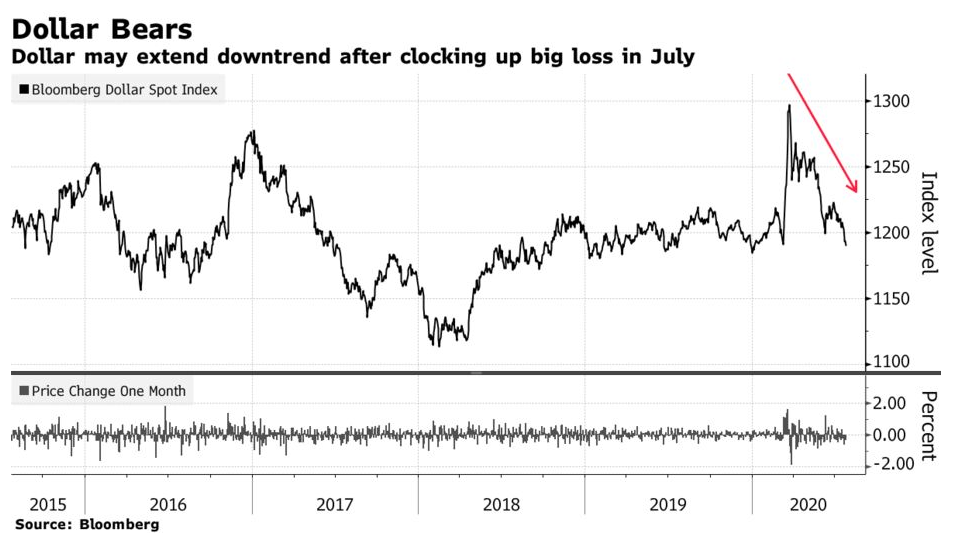
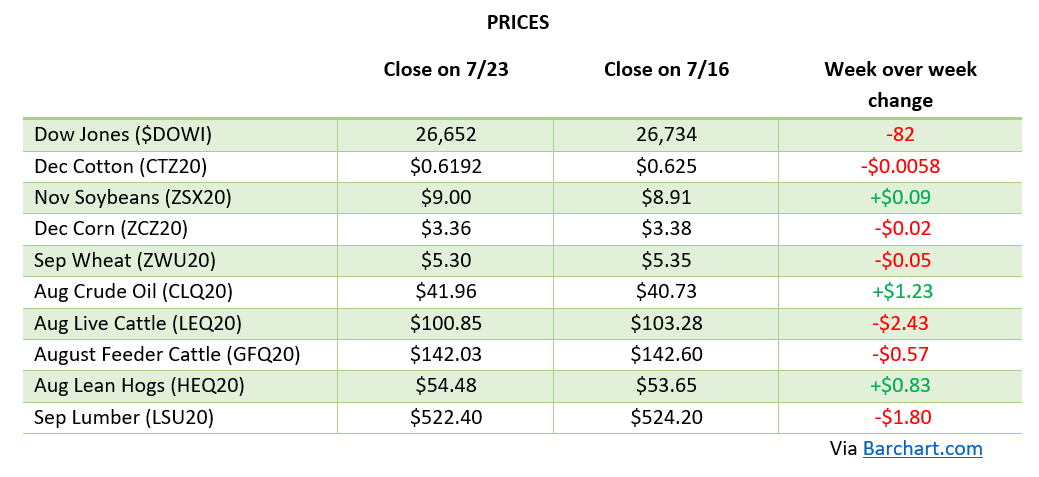
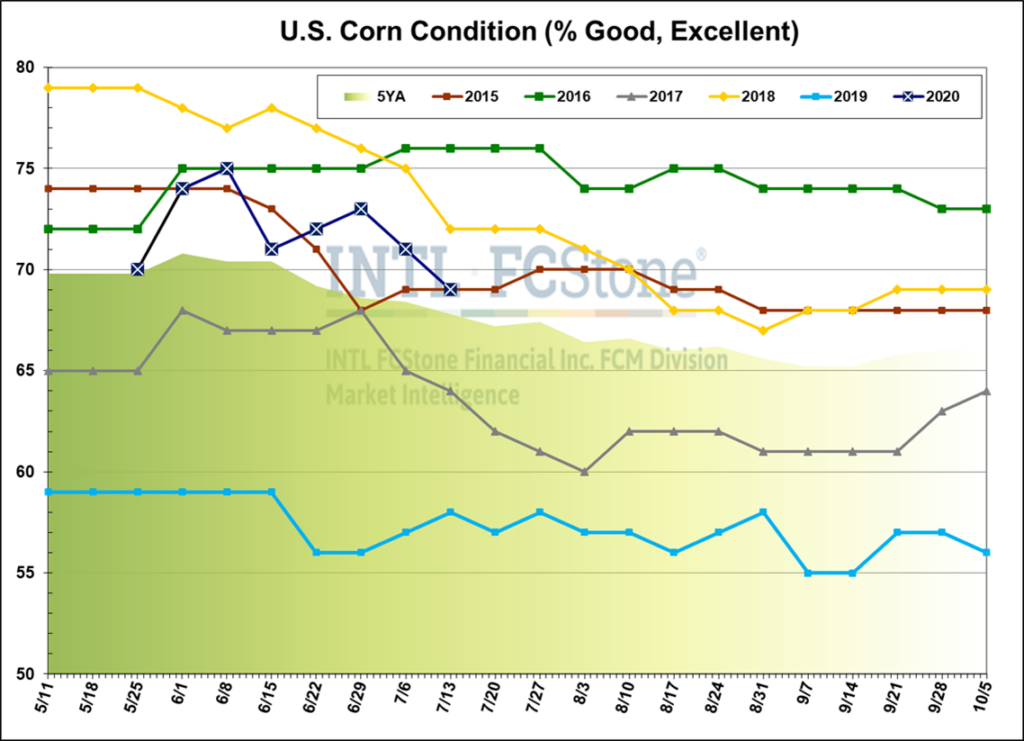
 Large purchases from China gave Wheat a big boost halfway into the week. Wheat did have to give a good chunk of that boost back the following day due to a lack of confirmation on purchases, but any Chinese purchases at this point are beneficial to the markets as other Wheat growing countries are seeing lower yield numbers. As you can see below, markets are well off the lows that we set a few weeks back as Wheat has made a solid rebound. Just like with Soybeans, more confirmed purchases, or any purchases for that matter, would be beneficial to U.S. Wheat.
Large purchases from China gave Wheat a big boost halfway into the week. Wheat did have to give a good chunk of that boost back the following day due to a lack of confirmation on purchases, but any Chinese purchases at this point are beneficial to the markets as other Wheat growing countries are seeing lower yield numbers. As you can see below, markets are well off the lows that we set a few weeks back as Wheat has made a solid rebound. Just like with Soybeans, more confirmed purchases, or any purchases for that matter, would be beneficial to U.S. Wheat.